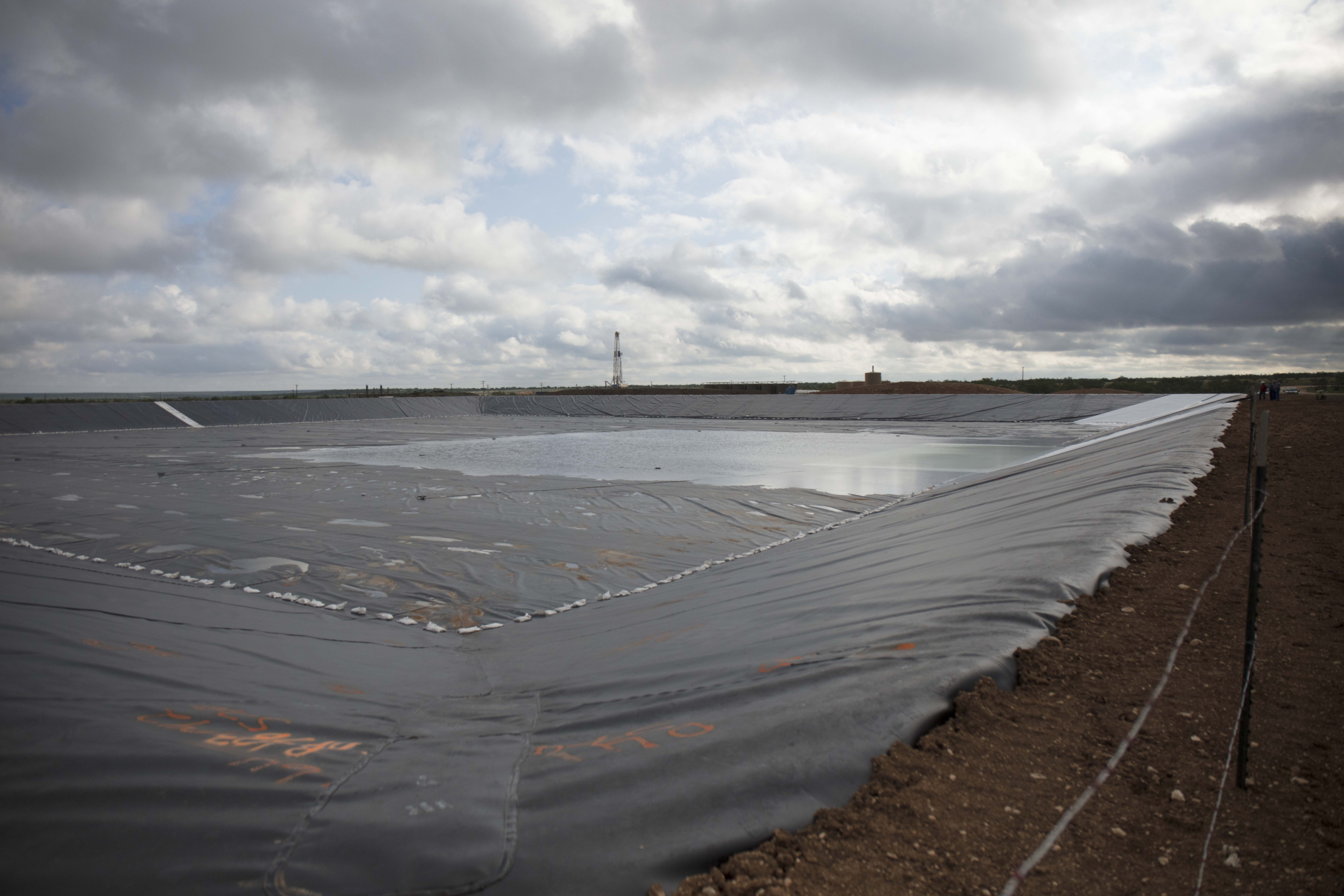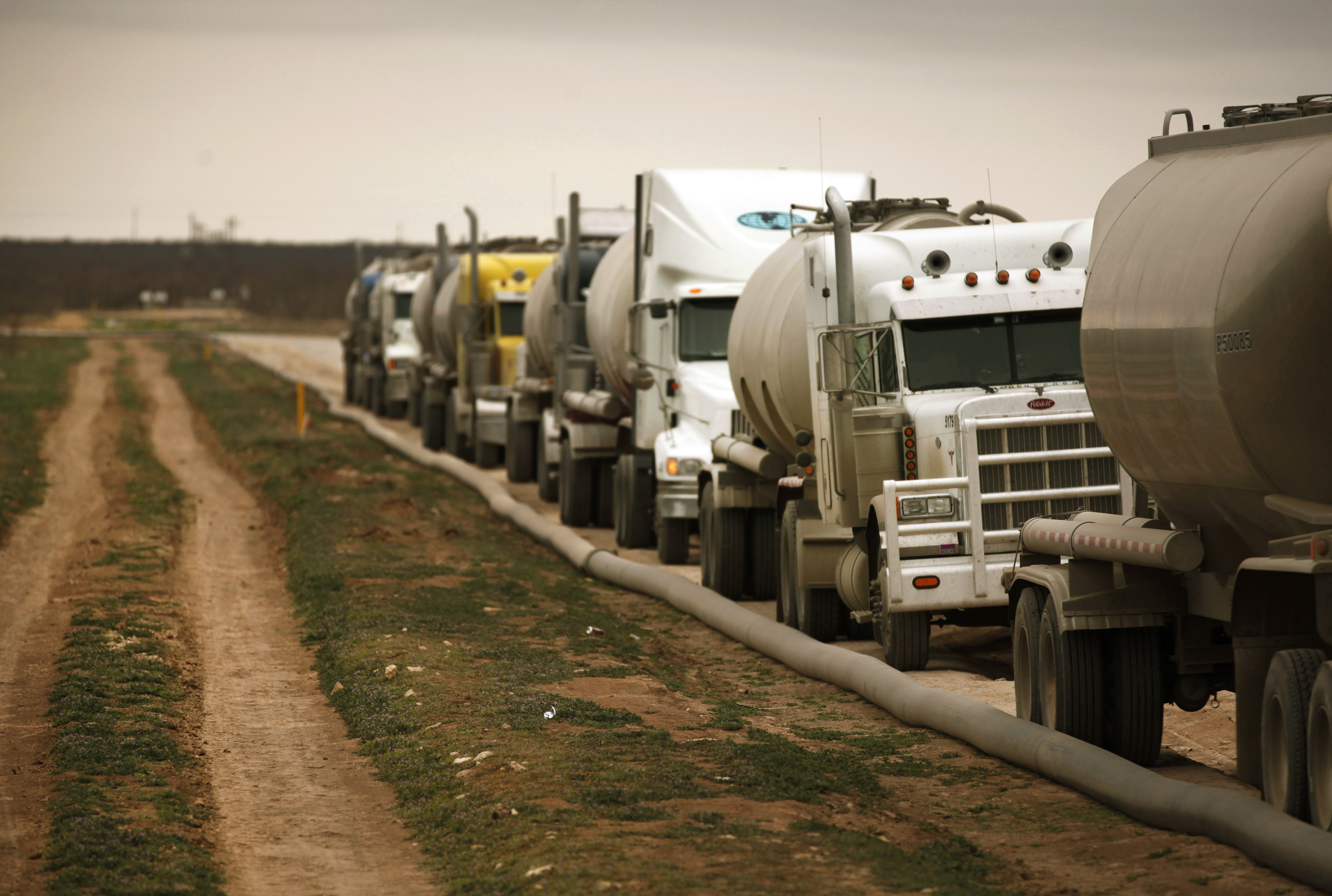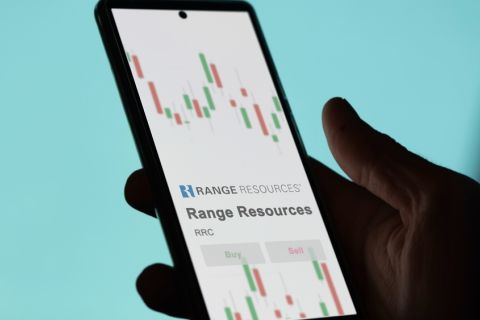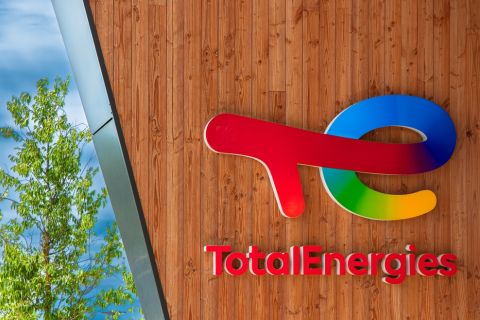
Increases in lateral length and proppant intensity are driving extreme demand for frack sand. (Photo by Tom Fox, courtesy of Oil and Gas Investor)
Other than water, there is very little in the world more boring than sand. Yet, both have captured the attention of the oil and gas industry for their role as crucial ingredients in the drilling and completion of a shale well.
Sustained oil and gas production combined with an escalating increase in lateral length and proppant intensity is driving “extreme” demand for frack sand, according to an IHS Markit report released in August. The current market value for frack sand exceeds $4 billion in 2018 and will reach nearly $6 billion by 2023. By comparison, the market value for frack sand in 2016 was $1.3 billion, according to the “IHS Markit ProppantIQ 2Q2018 Analysis” report.
On the water front, a Duke University study published in August found that the amount of water used per well for hydraulic fracturing surged by up to 770% between 2011 and 2016 in all major U.S. shale gas and oil production regions. In addition, the study showed that the volume of brineladen wastewater that hydraulically fractured oil and gas wells generated during their first year of production also increased by up to 1,440% during the same period.
“If this rapid intensification continues, fracking’s water footprint could grow by up to fiftyfold in some regions by the year 2030—raising concerns about its sustainability, particularly in arid or semiarid regions in western states or other areas where groundwater supplies are stressed or limited,” the report stated.
The multiyear effort to meet the industry’s sand and water demands has its challenges, like sourcing and transporting adequate supplies without busting the budget or severely impacting operations. Many of the solutions to these challenges will continue to be stretched thin in 2019 as shale operators push for higher production returns and to capitalize on increased takeaway capacities made possible by new pipelines.
Sand market outlook
Over the past few years, the laws of supply and demand have gotten a real workout in all industrial sectors. For the oil and gas industry, global energy demand is a key driver. Global energy consumption is projected to grow by an additional 17% between 2016 and 2025 from 13.3 billion tonnes of oil equivalent (Btoe) to 15.5 Btoe, according to a presentation delivered by Todd Bush, vice president of commercial and principal for Energent, a Westwood Global Energy Group, at the Petroleum Connection’s 7th Annual Frac Sand Supply & Logistics Conference held in October in San Antonio.
“What it really indicates for us is that there’s a growing need for energy—not just crude but natural gas, LNG and, for the U.S. specifically, export capability,” Bush said. “We were excited to see what that does [and] how that balance comes into the market because it is still something that is new for the market. Everyone is still trying to get their arms around what it means. We’re seeing growth, getting close to 1 million barrels per day there in export capabilities. It is an exciting area to watch, especially as we move into 2019.”
In looking for growth opportunities, Bush noted that it is interesting to see how not only the Permian Basin adjusted to lower-per-barrel oil prices but how other shale plays, like the Bakken, Eagle Ford and Niobrara, have adapted and matured.
Part of that maturation process includes the buildout of infrastructure and takeaway capacity. For the Permian Basin, more than 6,000 miles of new trunk lines are planned or under construction to carry crude, natural gas and NGL to the Gulf Coast, according to Bush. It is a natural leap to question how the capacity constraints have impacted well completions.
“We’re anticipating the DUC [drilled but uncompleted] inventory to build and increase even more,” he said. “We’ve seen about a 30% increase in the DUC backlog year-over-year and we’re anticipating this to grow, especially for the D-J [Denver- Julesburg] Basin, with a majority of the DUCs in the Permian.”

The total DUC well count for October was 8,545, according to the U.S. Energy Information Administration Drilling Productivity Report issued in November. Of that, the Permian Basin has 3,866 DUC wells and the Eagle Ford has 1,571.
More than $1.4 billion in Permian completions spend was pushed to 2020, according to Bush, with about 380 completions being deferred, adding to the DUC inventory there.
“We’re watching the uncompleted backlog to see how operators actually bring that backlog down over time,” he said. “For example, we’ve seen a couple of large operators in the Delaware Basin complete wells that were drilled three years ago. We’re seeing more wells being completed that were drilled.”
Regional constraints like pipeline capacity could easily create an oversupply of sand, according to Svetlana Doh, oil and gas analyst for GlobalData.
“Rapidly growing sand demand in the Permian is raising questions on whether there will be enough supply of proppant available. It is estimated that the total sand consumption in the Permian will reach more than 77 billion pounds this year,” she said in a press release. “The demand growth is mainly due to the increased wells lateral length and larger amount of proppant injected per well, which grew by more than 70% in the last three years.”
Doh noted that the share of locally produced sand is expected to grow to more than 40%, increasing the competition to the white sand supply from the upper Midwest to the Permian.
“In fact, there were at least five sand mines opened in the Permian by Hi-Crush, Black Mountain Sand and U.S. Silica in 2018 with a proppant supply of 35 billion pounds per year. Many more mines are expected to be opened soon, which will likely solve the basin’s sand shortage problem over the near future,” she said in the release.
“However the ample local sand sources can easily translate into an excess supply whenever drilling activity reduces its pace due to the logistic bottlenecks in the Permian Basin,” Doh said. “If this is persistent, sand prices will fall, benefiting operators that do not face any pipeline restrictions.”
Ryan Carbrey, senior vice president of shale research for Rystad Energy, also presented at the Frac Sand Supply & Logistics Conference. He sees the DUC count continuing to increase in the Permian Basin until the third quarter of 2019 when he expects “completion activity to really pick up as people expect to put oil in the pipeline in the fourth quarter, with other plays not showing an increase in DUCs except for maybe the Midcon.”
According to Carbrey, there are three things that impact frack sand demand: number of wells drilled, the lateral feet per well and proppant per foot.
“All three of those increased at roughly the same time, causing an exponential increase in overall frack sand demand. We are not expecting all of those increases at the same rates going forward. However, we are projecting well counts and proppant per foot to increase moderately,” he said.
As for frack sand supply, Carbrey noted the major shift to in-basin sand in 2017.
“Almost no one was talking about in-basin sands in 2014,” he said. “Starting in 2017, we started hearing about the in-basin sands and the Permian, and the same phenomena that happened in the Permian has occurred in other places.”
Sand expansion
Those other places include South Texas, Oklahoma and the Rockies.
In U.S. Silica’s third-quarter 2018 earnings call, CEO Bryan Shinn noted the addition of local sand projects in other basins with varying degrees of market acceptance.
“We believe that as much as 12 million to 14 million tons of new capacity could eventually come online outside the Permian, mostly in South Texas and the Midcon,” he said. “We do, however, expect that many of our customers will continue to want to pump Northern white sand in these basins as well as other geographies such as the Bakken, the Rockies and the Northeast.”
The incremental local capacity will continue to apply pressure to the Northern white sand sales volumes, with high cost Northern white mines facing closure as more local mines come online, he added.
“We’ve seen more than 12 million tons per year of idle capacity,” he said. “We believe that another 10 million to 15 million tons of nonlocal capacity may come offline in the next few quarters.”
According to Shinn, less than one-third of U.S. Silica’s contribution margin came from Northern white sales, and the company expects to triple its Permian capacity by the end of the first quarter of 2019 with its sand mine ramp-ups in Crane and Lamesa.
Another dynamic at play in the frack sand market is, according to Shinn, the many E&P companies choosing to directly source its sand to assure supply and reduce completion costs.
“It is a disruptive change as these customers are more focused on product quality, supplier safety and reliability as well as delivered cost. They are also more likely to sign longer-term contracts— those that are aligned with their long-term drilling plans as evidenced by our recently announced 15-year sand supply contract with Pioneer Natural Resources,” he said.
The self-sourcing trend also is delivering value in unexpected ways. For example, WildHorse Resource Development announced at the beginning of the year its plans to build an infield sand facility to support its Eagle Ford operations. First slated to come online in the first quarter of 2019, the company announced that first sand loadings were expected as early as November 2018, with full-capacity operations to begin at the end of the month. The 727-acre facility holds about 85 MMtons of 100 mesh and 40/70 mesh sand, providing a more than 40-year supply of sand, according to the company.
In October Chesapeake Energy announced its intent to acquire WildHorse for $3.9 billion. The infield sand facility, while not factoring directly into the decision to purchase, is certainly considered a perk.
Jason M. Pigott, executive vice president of operations and technical services for Chesapeake, said in its third-quarter 2018 earnings call that while sand is not necessarily the company’s core business, it does provide the company with advantages that could create operational synergies fairly quickly.
The sand mine is an “excellent asset to have,” said Doug Lawler, president and CEO for Chesapeake. “So completing [the project] out and it being operational gives us a lot of flexibility. We’re looking to capture value and create synergies across the portfolio, and the sand mine will be fully utilized and optimized to capture that value.”
For its operations in the Marcellus Shale and Powder River Basin, Chesapeake announced in November that it signed a new, long-term agreement for the in-basin purchase of Northern white sand from Hi-Crush Partners, according to a press release. The company will use one PropStream container crew and related logistics with the option to expand based on demand.
“We are excited to reach an agreement to provide services to meet Chesapeake’s demand for Northern white frack sand and associated proppant logistics needs,” said Robert E. Rasmus, chairman and CEO of Hi-Crush, in the release. “We believe this agreement affirms the value of our ‘Mine. Move. Manage.’ operating strategy as well as the ongoing demand for Northern white frack sand, the strength of our logistics network and our success in increasingly partnering with producer customers.”
Analysts with Simmons Energy projected in a recent oil services report that the effective capacity in the Eagle Ford will near about 8 MMtons to 9 MMtons by the second quarter of 2019 (nameplate of 13 MMtons) compared with demand of about 14 MMtons. Additionally, the analysts believe mines from outside the Eagle Ford region will continue to sell sand into the basin for the better part of 2019.

In addition to its three mines in the Permian Basin with mining capacity of 13 million annual tons, Black Mountain Sand has two mines in the Eagle Ford and plans for one in the Midcontinent. The company is planning to open mines in the Powder River Basin and D-J Basin in 2019 with an estimated annual capacity of 2 MMtons and 4 MMtons, respectively, according to Rhett Bennett, CEO of Black Mountain Sand. Bennett, a panelist on an in-basin sand discussion held at the Frac Sand Supply & Logistics Conference, said the company has looked into bringing sand online in the Bakken and Appalachia. “Finding the right deposits is a challenge, and the jury is still out on finding a deposit that is commercially viable to mine that’s of sufficient quality,” he said. “But we’re looking.”
With three Texas-based sand mines, Vista Proppants and Logistics announced the development of a 1- to 1.5-MMtons/year sand mine northeast of Fay, Okla., to serve customers primarily operating in the Midcontinent region’s Scoop and Stack oil and gas plays, according to a press release. The 1,150-acre mine site has ready access to water, electricity and natural gas and will begin construction following permit approval.
“Our development of an in-basin mine in the underserved Scoop and Stack plays is the next step in Vista’s long-term strategy to provide customers a broader-based, truly differentiated mine-towellhead solution for their frack sand needs,” Vista CEO Gary Humphreys said in the press release. “We plan on producing both 100 mesh and 40/70 products with solid crush and other characteristics designed to best serve the growing need for in-basin sourced frack sand.”
Kristin Smith, CFO for Vista Proppants and Logistics, also a Frac Sand Supply & Logistics Conference panelist, noted in her remarks that as a vertically integrated business, Vista is able to deliver sand at the lowest cost.
“Our value proposition is getting sand from the mine all the way to the wellhead,” she said. “Having access to sand in the Permian Basin is no longer a differentiator. Our competitive advantage is our logistics network. We started in trucking in 2004; we know the challenges of the trucking market very well. We went into transloading in 2007 and then, of course, mining in 2011. We are able to control our costs and to be a low-cost provider by owning that full supply chain of assets and have the deep organizational knowledge in all aspects of that supply chain. It’s helped us be successful and to allow us to deliver the sand to our customers on time and at a low cost.”
Water, water everywhere
In addition to a sand supply challenge, the increased rate of drilling and the increase in lateral length footage has further elevated the challenge of effectively managing oilfield water needs. While locating and procuring ample supplies of water remains a challenge for some operators, disposal of produced water remains a challenge for others.
According to its U.S. Water Management market segment report, Spears & Associates stated that the demand for water management services associated with the acquisition, transport, transfer, storage, flowback, treatment and disposal of water increased 44% in 2017 to $18.9 billion in response to increased horizontal drilling activity, increased per-well fracturing job size and increased recycling/ treatment activity.

In Bluefield Research’s “Water for Hydraulic Fracturing: Market Size, Trends & Forecasts, 2018- 2027” data insights report, it stated that water management spending for hydraulic fracturing services is expected to total $161 billion over the next decade. In terms of volumes, Bluefield’s analysts estimated that more than 2.2 Bbbl were consumed in 2017 by the hydraulic fracturing industry, producing about 660 MMbbl of contaminated water for disposal and of that about 14% were treated and reused.
Several key water trends touching on water sourcing, recycling and disposal in the Permian Basin were highlighted during Hart Energy’s Executive Oil Conference (EOC) Water Forum in Midland, Texas. The water management services market is one that has experienced exponential growth in recent years, with its evolution tracking the region’s production growth.
“Water has been a part of the oil business forever,” said Bill Zartler, CEO of Solaris Water Midstream, in his remarks at the conference. “It is just changing in magnitude of demand on the supply side for hydraulic fracturing and the size of the wells we’re producing today.”
For example, in 2005 oil production ranged between 800,000 bbl/d and 950,000 bbl/d, with a primarily vertical rig count and about 80,000 bbl to 100,000 bbl of water per month being disposed at a saltwater disposal (SWD) facility. Water delivery at the time was heavily focused on trucking as pipelines were not considered economical at the time due to limited centralized gathering facilities, according to Cory Hall, president and CEO of Aqua Terra Water Management.
“Horizontal shale activity kicks off in 2011, with frack sizes averaging nine stages using 10,000 barrels of water per stage, with lateral lengths ranging between 3,900 ft and 5,280 ft,” Hall said. “Permian Basin production surpassed 1 million barrels of oil per day that year.”
At this time, trucking was still the primary delivery method, as water infrastructure development was in its infancy and SWD facilities were seeing water disposal rates up over 2005, with 150,000 to 250,000 bbl per month, he noted.
Just as drilling and completion techniques and technologies evolved, so too did the industry’s response to water management.
“In 2018 we focused on pipeline deliveries,” Hall said. “They’re safer, more reliable and more economical. Having multiple disposal facilities tied together helps eliminate downtime and better manage volumes.”
Disposal water volumes in 2018 averaged between 400,000 bbl to more than 1 MMbbl of water per month, he said, adding that the estimated production for the month of November was expected to surpass 3.5 MMbbl/d.
“Frack sizes average 25 to 35 stages per well using 10,000 barrels of water per stage for 1-mile long laterals,” he said. “Two-mile long laterals are seeing 50 to 70 stages per well, with each stage receiving 10,000 barrels of water per stage. Effectively, every well today is receiving 250,000 to 700,000 barrels of water to just frack the wells.”
However, increased disposal volumes will likely create future water management issues, according to Mark Patton, president of Hydrozonix.
“We’re going to see challenges in the practice of disposal by injection,” Patton said. “You’re either going to start transporting water farther away to [dispose in] zones where you do not have capacity issues or formations pressuring up. Or you’re going to have to look at other options, including water reuse programs and evaporation. It has to be a part of your overall water management program.”

The growth of the water midstream market will continue long into the future, according to Zartler.
“This market is evolving pretty massively and it will continue to evolve,” Zartler said. “It’s a very large market and it’s not going to be done by one or two companies. It will evolve like the hydrocarbon mainstream. There’s a large number of consolidated midstream companies that didn’t exist in 1992. They all exist today because it’s more efficient. It’s a better service to the industry and helps make our business better.”
According to Mark Houser, CEO of University Lands, the push toward consolidation of operations and water infrastructure is one that will require cooperation among operators and service companies.
“We think that water management is going to consolidate similar to the mainstream business, and we’re working with operators to help that happen,” he told EOC Water Forum attendees. “We’re going after three, maybe more, areas of consolidation— the Delaware Basin, the Southern Midland and Northern Midland basins. The main thing is going to be getting cooperation between all the operators, which have been building their own networks.
“At one point, there were no Kinder Morgans or Enterprises. In some ways, I think it is even more predictable because of not just the frack water demand but also the produced water supply. In my mind, it gives you a very predictable stream.”
Recommended Reading
Range Resources Expecting Production Increase in 4Q Production Results
2024-02-08 - Range Resources reports settlement gains from 2020 North Louisiana asset sale.
To Dawson: EOG, SM Energy, More Aim to Push Midland Heat Map North
2024-02-22 - SM Energy joined Birch Operations, EOG Resources and Callon Petroleum in applying the newest D&C intel to areas north of Midland and Martin counties.
Tech Trends: Halliburton’s Carbon Capturing Cement Solution
2024-02-20 - Halliburton’s new CorrosaLock cement solution provides chemical resistance to CO2 and minimizes the impact of cyclic loading on the cement barrier.
Petrobras to Step Up Exploration with $7.5B in Capex, CEO Says
2024-03-26 - Petrobras CEO Jean Paul Prates said the company is considering exploration opportunities from the Equatorial margin of South America to West Africa.
TotalEnergies Restarts Gas Production at Tyra Hub in Danish North Sea
2024-03-22 - TotalEnergies said the Tyra hub will produce 5.7 MMcm of gas and 22,000 bbl/d of condensate.





